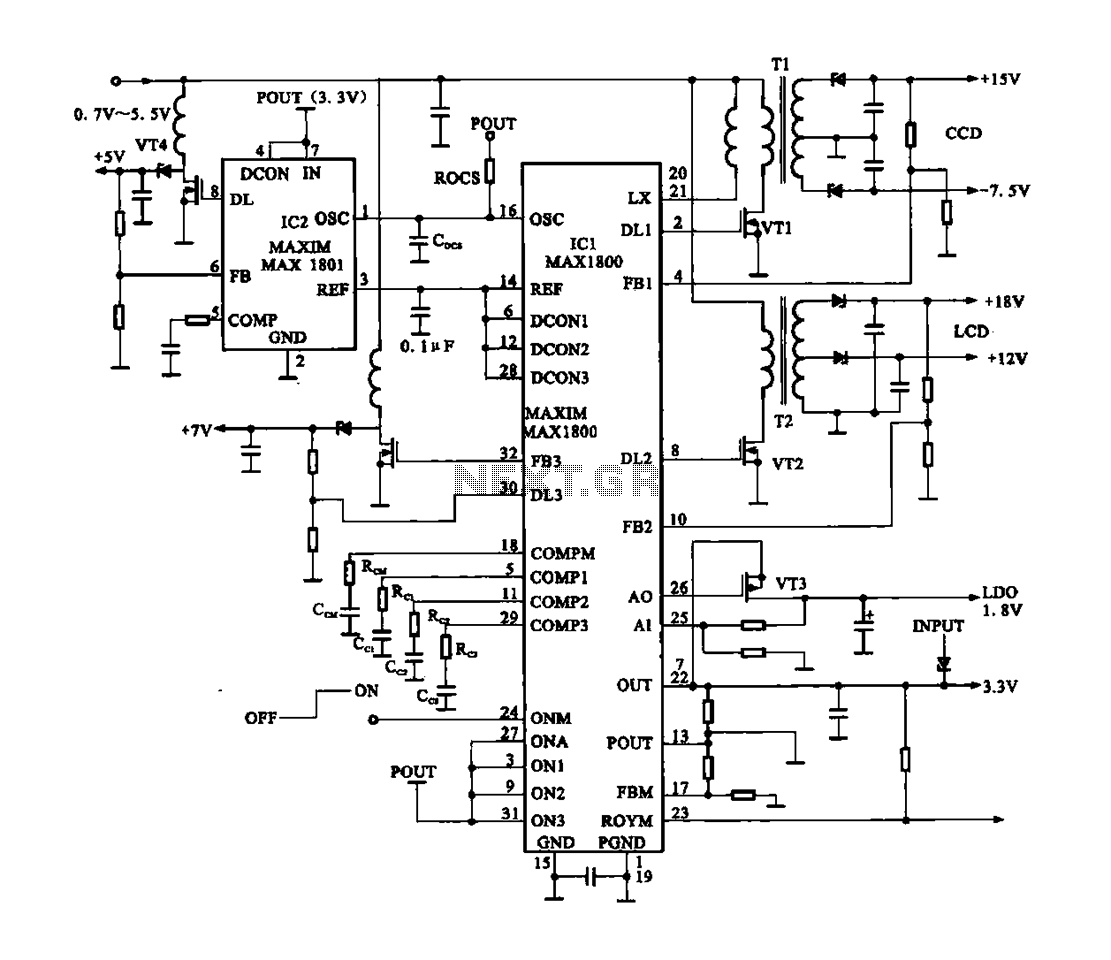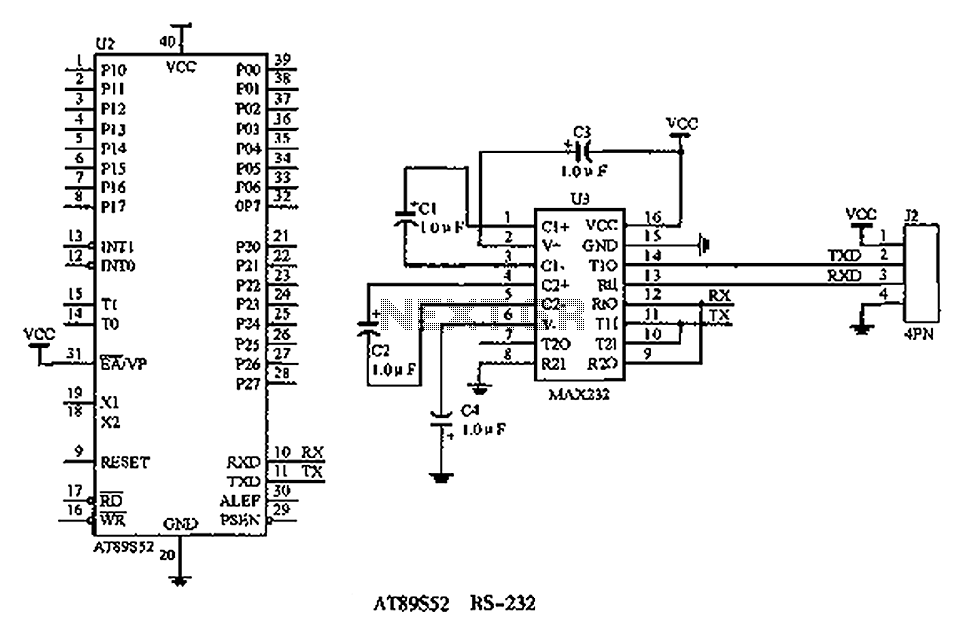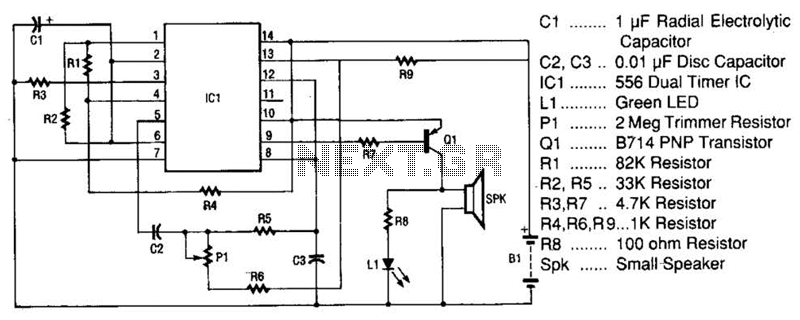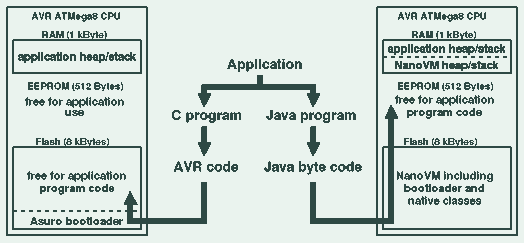
1936 Hoyland Machine

A second piece of information has recently come to light regarding an original Rife machine schematic associated with Dr. O. C. Gruner of Canada, who collaborated with Rife in the 1930s to isolate a fungal form of Rife's cancer microbe known as "BX." This form was later named "Cryptomyces Pleomorphia." Dr. Milbank Johnson sought to find a Mortality Rate (MOR) for this cancer form, believing that better outcomes could be achieved by targeting Cryptomyces with the Rife Ray. Johnson persistently urged Rife for approximately two to three years to identify the MOR of Cryptomyces, but there is no record indicating whether Rife succeeded, and correspondence from Dr. Johnson suggests significant challenges in this endeavor. Johnson operated several clinics in the Los Angeles area during the late 1930s, initially utilizing the original Rife Ray No. 4 machine, later transitioning to another machine whose details remain unclear from his letters. This subsequent machine appears to have been a prototype developed around 1936 by Phillip Hoyland. In an effort to determine the MOR of Cryptomyces, Johnson reportedly sent this machine to Dr. O. C. Gruner in Canada for further investigation. However, there is no definitive account of the events that followed. Anecdotal evidence suggests that Gruner hesitated to use the machine due to concerns about offending the Canadian medical establishment and ultimately gave it to a priest friend, who dismantled it for his ham radio hobby. There are also claims that Gruner produced a schematic of the machine and forwarded it to John Crane in the early 1950s, but this schematic has not been located. In 2001, Stuart Andrews discovered an original confidential report by John Crane, intended for internal circulation within the Rife labs. This report elaborates on the events, stating that in 1950, Crane met Roy Rife and learned about Rife's cancer cures from the 1930s, which had been suppressed by the AMA. Crane resolved to dedicate his efforts and expertise to making a cancer cure accessible to the public. Dr. Gruner provided Crane with one of the original circuit designs for the Rife Ray Tube, and Crane subsequently enlisted Verne Thompson, an electronics expert from the San Diego police force, to assist in constructing new Frequency Instruments. Unfortunately, Rife had previously engaged electronic experts in the 1930s who failed to document the details of the instruments, preventing Rife from replicating his earlier successes. The instruments, completed by Crane and Thompson in 1953, yielded negative test results. Following this, attempts to locate the original schematic were unsuccessful until Jeff Garff fortuitously obtained photographs of it. Garff sent these photographs to Crane, who then collaborated with Bob Harrison to analyze and redraw the schematic, correcting minor errors made in previous versions. The final schematics and related data are linked below. A photograph of the original Gruner schematic, corrected engineering drawings by Bob Harrison, and a modern redrawing of the schematic are included. It is important to note that not all component values are available.
The original Rife machine schematic is pivotal in understanding the historical context and technical evolution of cancer treatment devices developed in the early to mid-20th century. The Rife Ray, a device believed to emit specific frequencies to target pathogens, was central to Rife's approach to cancer therapy. The collaboration between Rife, Gruner, and Johnson highlights the intersection of medical research and technological innovation, as they sought to harness electronic principles to combat disease.
The construction of the Rife Ray Tube involved intricate electronic design, focusing on frequency generation and modulation to create therapeutic effects. The schematic likely included components such as oscillators, amplifiers, and filters, which would be essential for producing the precise frequencies required to target Cryptomyces and other pathogens effectively. The challenges faced by Rife and his contemporaries in documenting their designs reflect a broader issue in the early days of electronic medicine, where proprietary knowledge and lack of standardization often hindered progress.
The eventual rediscovery of the schematic by Crane and Thompson, along with the efforts of Garff and Harrison in redrawing it, underscores the importance of preserving and sharing technical knowledge within the scientific community. This collaboration not only aimed to restore the functionality of the Rife Ray but also sought to validate its efficacy through rigorous testing, despite initial setbacks. The legacy of these early pioneers in electronic medicine continues to influence contemporary approaches to cancer treatment and the exploration of frequency-based therapies.A second piece of information also came to light recently. I was aware of a story about an original Rife machine schematic which had something to do with Dr O. C. Gruner of Canada who worked with Rife throughout the 1930`s on isolating a fungal form of Rife`s cancer microbe `BX". This latter form was given the name "Cryptomyces Pleomorphia". Dr Mil bank Johnson was anxious to find an MOR for this form of cancer as he believed that much better results in cancer cases could be achieved if they could kill Cryptomyces with the Rife Ray. Johnson hassled Rife constantly for 2 or 3 years to find the MOR of Cryptomyces, however no record exists to show if Rife ever did find it, and the apparent difficulty he was having, as evidenced in various letters by Dr Johnson seems to indicate that he never did find it.
Milbank Johnson ran several clinics in and around Los Angeles in the late 1930`s, giving treatments with the Rife Ray. At first he used the original Rife Ray No 4 machine, but later he used another machine, details of which were not apparent from his letters.
It appears it was a prototype machine of some description from around 1936 and built by Phillip Hoyland. Eventually, in an attempt to find the MOR of Cryptomyces, Johnson apparently shipped this machine to Dr O.
C. Gruner in Canada, so Gruner himself could try to find the MOR. There is no clear record of what happened after this. I am aware of an anecdote that says that Gruner got scared of offending the Canadian medical establishment and never actually used the machine. It was said that he eventually gave the machine to a friend of his, a priest, who cannibalised the machine for his ham radio hobby.
However, there was also a story that somehow Gruner had produced a schematic of this machine and had sent it to John Crane in the early 1950`s, but nobody I was aware of had seen this schematic. In 2001 Stuart Andrews came across an original document which was a confidential report by John Crane, for internal circulation only within the Rife labs.
In that report (on page 6) Crane tells the story in more detail. In particular he says: "In 1950, John Crane met Roy Rife. After learning how Rife had cured cancer in the 1930`s but had seen his cure suppressed by the AMA, Crane decided to commit his energy, will and electronic and mechanical knowledge to bringing the cure for cancer to the public. Dr Gruner of Canada, who worked with Rife in the `30`s provided Crane with one of the original circuit designs for the Rife Ray Tube.
Crane also hired Verne Thompson, an electronics expert with the San Diego police force, to help construct the new Frequency Instruments. Unfortunately, Rife had enlisted the help of electronic experts in the `30`s who never wrote down the details of the instruments.
Rife was unable to duplicate the marvels of his earlier Frequency Instruments. The instruments were completed by Crane and Thompson in 1953, but the test results were negative. " We immediately started attempts to locate this schematic, without any success until purely by luck, Jeff Garff managed to obtain photographs of the original schematic. Jeff sent them to me and I sent copies to Bob Harrison for analysis. With Bob`s help I redrew the schematic (as did Bob himself) with a few minor corrections. Crane had redrawn Gruner`s papers and made some mistakes in the process (or maybe they were Gruner`s mistakes) but in any event they were minor and obvious.
Those schematics and associated data are linked below. I would like to extend my thanks to Jeff Garff, Bob Harrison and Stuart Andrews for their help in obtaining this, the credit belongs to them, not me. Below I have reproduced a photograph of the original Gruner Schematic as taken by Jeff Garff, Bob Harrison`s corrected engineering drawings of the same, and finally a PDF file containing my modern redrawing of the schematic.
Please note that we don`t have all the component values, they 🔗 External reference
The original Rife machine schematic is pivotal in understanding the historical context and technical evolution of cancer treatment devices developed in the early to mid-20th century. The Rife Ray, a device believed to emit specific frequencies to target pathogens, was central to Rife's approach to cancer therapy. The collaboration between Rife, Gruner, and Johnson highlights the intersection of medical research and technological innovation, as they sought to harness electronic principles to combat disease.
The construction of the Rife Ray Tube involved intricate electronic design, focusing on frequency generation and modulation to create therapeutic effects. The schematic likely included components such as oscillators, amplifiers, and filters, which would be essential for producing the precise frequencies required to target Cryptomyces and other pathogens effectively. The challenges faced by Rife and his contemporaries in documenting their designs reflect a broader issue in the early days of electronic medicine, where proprietary knowledge and lack of standardization often hindered progress.
The eventual rediscovery of the schematic by Crane and Thompson, along with the efforts of Garff and Harrison in redrawing it, underscores the importance of preserving and sharing technical knowledge within the scientific community. This collaboration not only aimed to restore the functionality of the Rife Ray but also sought to validate its efficacy through rigorous testing, despite initial setbacks. The legacy of these early pioneers in electronic medicine continues to influence contemporary approaches to cancer treatment and the exploration of frequency-based therapies.A second piece of information also came to light recently. I was aware of a story about an original Rife machine schematic which had something to do with Dr O. C. Gruner of Canada who worked with Rife throughout the 1930`s on isolating a fungal form of Rife`s cancer microbe `BX". This latter form was given the name "Cryptomyces Pleomorphia". Dr Mil bank Johnson was anxious to find an MOR for this form of cancer as he believed that much better results in cancer cases could be achieved if they could kill Cryptomyces with the Rife Ray. Johnson hassled Rife constantly for 2 or 3 years to find the MOR of Cryptomyces, however no record exists to show if Rife ever did find it, and the apparent difficulty he was having, as evidenced in various letters by Dr Johnson seems to indicate that he never did find it.
Milbank Johnson ran several clinics in and around Los Angeles in the late 1930`s, giving treatments with the Rife Ray. At first he used the original Rife Ray No 4 machine, but later he used another machine, details of which were not apparent from his letters.
It appears it was a prototype machine of some description from around 1936 and built by Phillip Hoyland. Eventually, in an attempt to find the MOR of Cryptomyces, Johnson apparently shipped this machine to Dr O.
C. Gruner in Canada, so Gruner himself could try to find the MOR. There is no clear record of what happened after this. I am aware of an anecdote that says that Gruner got scared of offending the Canadian medical establishment and never actually used the machine. It was said that he eventually gave the machine to a friend of his, a priest, who cannibalised the machine for his ham radio hobby.
However, there was also a story that somehow Gruner had produced a schematic of this machine and had sent it to John Crane in the early 1950`s, but nobody I was aware of had seen this schematic. In 2001 Stuart Andrews came across an original document which was a confidential report by John Crane, for internal circulation only within the Rife labs.
In that report (on page 6) Crane tells the story in more detail. In particular he says: "In 1950, John Crane met Roy Rife. After learning how Rife had cured cancer in the 1930`s but had seen his cure suppressed by the AMA, Crane decided to commit his energy, will and electronic and mechanical knowledge to bringing the cure for cancer to the public. Dr Gruner of Canada, who worked with Rife in the `30`s provided Crane with one of the original circuit designs for the Rife Ray Tube.
Crane also hired Verne Thompson, an electronics expert with the San Diego police force, to help construct the new Frequency Instruments. Unfortunately, Rife had enlisted the help of electronic experts in the `30`s who never wrote down the details of the instruments.
Rife was unable to duplicate the marvels of his earlier Frequency Instruments. The instruments were completed by Crane and Thompson in 1953, but the test results were negative. " We immediately started attempts to locate this schematic, without any success until purely by luck, Jeff Garff managed to obtain photographs of the original schematic. Jeff sent them to me and I sent copies to Bob Harrison for analysis. With Bob`s help I redrew the schematic (as did Bob himself) with a few minor corrections. Crane had redrawn Gruner`s papers and made some mistakes in the process (or maybe they were Gruner`s mistakes) but in any event they were minor and obvious.
Those schematics and associated data are linked below. I would like to extend my thanks to Jeff Garff, Bob Harrison and Stuart Andrews for their help in obtaining this, the credit belongs to them, not me. Below I have reproduced a photograph of the original Gruner Schematic as taken by Jeff Garff, Bob Harrison`s corrected engineering drawings of the same, and finally a PDF file containing my modern redrawing of the schematic.
Please note that we don`t have all the component values, they 🔗 External reference





